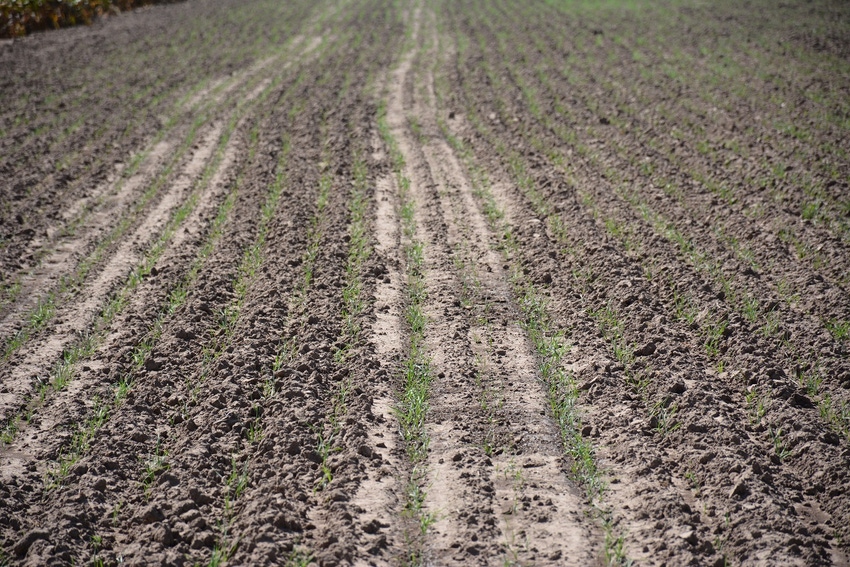
Mark Welch's wheat marketing plan calls for pre-harvest sales in this time frame. "I have priced the first 15 percent of next year’s crop. I am prepared to price an additional 15 percent before next year. That would bring me to 30 percent hedged as the crop emerges from dormancy. My plan calls for pricing another 20 percent in late winter and 20 percent in early spring. I will sell the final 30 percent at harvest.”

The Texas wheat crop may be struggling to get started this fall as dry conditions persist, but outlook for improved moisture and forecast for significant rainfall across much of the hard red winter wheat production area likely will keep a cap on prices.
“Winter wheat plantings are just about normal,” says Texas AgriLife Extension economist Mark Welch, College Station, in his weekly market outlook.
Favorable crop prospects, he says, would dictate at least some pre-harvest sales for the 2016 production.
For the latest on southwest agriculture, please check out Southwest Farm Press Daily and receive the latest news right to your inbox.
“Though there may be production issues with the 2016 world wheat crop ahead, supplies in the near term appear to be more than adequate. My marketing plan calls for pre-harvest sales in this time frame and I have priced the first 15 percent of next year’s crop. I am prepared to price an additional 15 percent before next year. That would bring me to 30 percent hedged as the crop emerges from dormancy. My plan calls for pricing another 20 percent in late winter and 20 percent in early spring. I will sell the final 30 percent at harvest.”
He bases his plan on current production climate and world supply.
Planting progress is running about normal, 7 percent complete compared to 77 percent. “Nationally, emergence is right at normal as well, 49 percent, while the Southern Plains are behind: Texas, 35 percent emerged, 40 percent normal; Oklahoma 49 percent emerged, 52 percent normal; Kansas 51 percent emerged, 56 percent normal; and Colorado 60 percent emerged, 72 percent normal.”
He says Texas wheat continues to struggle with top soil moisture ratings ranging from short to very short. “which is limiting emergence and causing damage in fields where wheat is up. Moisture prospects the week ahead offer hope that that situation will improve.”
Crop prospects
Across the wheat belt, “the updated seasonal outlook (October 15) calls for wet conditions across much of the southern U.S. through January, a forecast consistent with the El Nino phenomenon.The latest weekly sea surface temperature (SST) departure is +2.4 degrees Centigrade. The most recent ONI value (July – September 2015) is +1.5 degrees Centigrade. A return to average conditions is expected by mid-summer.”
Welch says he hopes his current estimates are wrong and that prices will improve.
“If they do, I have much more wheat to price. If prices go lower, I will be glad to have some of the crop covered at a price above the insurance base price ($5.20).”
About the Author(s)
You May Also Like





